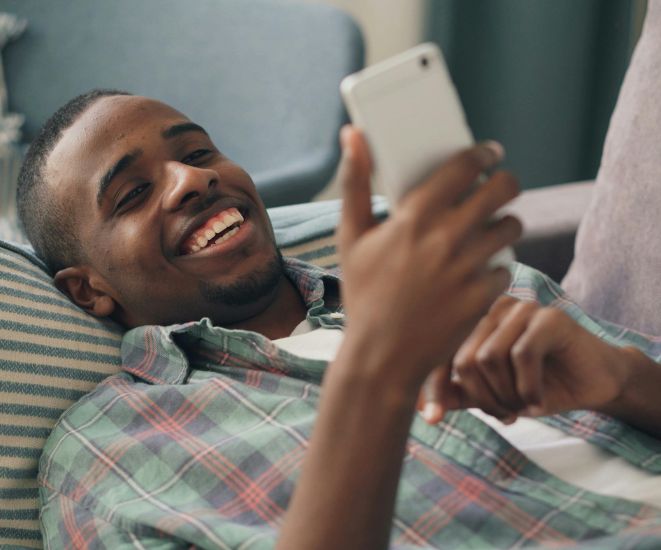Application Steps & Assistance Programs
We've put together a full guide to how to get a free cell phone in the USA with special details for seniors, and a list of providers that offer free phones or free/discounted service with what they provide. If you’re a senior or helping one, many of these steps are relevant.
Steps to Get a Free Cell Phone in the USA
Getting a “free" cell phone usually means qualifying for a device and service at low or no cost through government assistance programs or through provider‐promotions. Here are the general steps:
1. Check Eligibility
You must meet certain criteria. This typically means having a household income at or below a defined percentage of the Federal Poverty Guidelines (often about 135%) or participating in qualifying public assistance programs like SNAP (Food Stamps), Medicaid, Supplemental Security Income (SSI), Federal Public Housing Assistance, Veterans Pension or something similar.
2. Use the National Verifier / Lifeline Application
The FCC’s Lifeline program has a centralized verification system managed by the Universal Service Administrative Company (USAC). You’ll need to apply via the National Verifier, which confirms eligibility. This can often be done online, by mail or through certain participating providers.
3. Choose a Lifeline Provider in Your State
Not all providers operate in every state. Once eligibility is confirmed, find a provider who offers Lifeline in your state or region. They will offer service plans under Lifeline, sometimes with a free phone (if available).
4. Apply With the Provider, Provide Documentation
You’ll need to give some documents to prove eligibility and identity: things like proof of income or proof of participation in qualifying assistance programs; proof of residence; often name, date of birth, last four digits of Social Security Number or Tribal ID if applicable.
5. Receive the Phone / Activation
If the provider offers a free phone, you may receive a device that is either shipped or picked up locally. Sometimes you have the option of bringing your own compatible device. Once you have your eligible device you can activate service.
6. Maintain the Service
There are requirements to keep the benefit: using the service at least once in a given period (often 30 days) and recertifying eligibility annually. You may also have only one Lifeline benefit per household.
Assistance Programs for Seniors
Seniors (generally age 65+) have some particular considerations and options:
Lifeline for Seniors
Seniors who meet the general eligibility (income or assistance programs) can apply for Lifeline just like others. For many, participating in Medicaid, SSI or another qualifying program already makes them eligible.
State Programs & Local Agencies
Some states have additional free or discounted phone/internet programs for seniors, often via state public utility commissions or senior service agencies. Local Area Agencies on Aging can sometimes help with applications or know of community programs.
Senior‐Friendly Devices & Plans
Some Lifeline providers or MVNOs may have senior‐friendly handsets (lighter, larger buttons, simple interface), or “55+" plans. These may not always be entirely free, but often highly discounted.
Medical/Disability Programs Overlaps
Seniors on Medicare do not automatically qualify via Medicare alone for Lifeline unless also qualifying via Medicaid or other eligible assistance programs. But seniors who are dual‐eligible (Medicare + Medicaid) often have access.
Things to Watch Out For
- Free phones are subject to availability. Not all providers always have free devices in stock.
- “Free phone" often means a basic or refurbished model. Features may be limited.
- You still might need to pay extra fees (sometimes for upgrades, or to keep certain premium features).
- Recertification and participation is required. You’ll lose service if you stop meeting eligibility or don’t use your service.
- Only one Lifeline benefit is allowed per household. If someone else in your home already uses Lifeline, you typically can’t get another.
Providers Who Offer Free Phones or Free Service
- Life Wireless. Offers free government phones + wireless service under the Lifeline program. Includes free unlimited talk and text, free high-speed data (depending on state) and free activation. No contract or credit check. Bring‐your‐own‐device options in some cases.
- Gen Mobile. Provides a free phone if available and free talk/text/data with Lifeline for eligible households. You’ll get a free SIM when approved. Plans vary by state.
- Assurance Wireless. One of the more widely available Lifeline providers. If you qualify, you receive a free phone, free monthly data, unlimited texting and free monthly minutes. No bills, no contracts.
- SafeLink Wireless. Provides free service under Lifeline: free minutes, texts and data each month. Also supplies pre-activated free phones in many cases. Keeps your own phone option if compatible. Plan details vary by state.
- StandUp Wireless. Offers free minutes, text and data for qualifying individuals via Lifeline. In many states, free phones in certain situations. Check their site/app to see if a free handset is available in your state.
- TruConnect. Provides free or low-cost cell phone service via Lifeline, especially for those on Medicaid, SNAP, etc. They also offer service plans and devices.
- TAG Mobile. Free phone + free monthly talk/text/data for eligible Lifeline consumers in certain states. Sometimes offers international calling. Free device or bring your own device if compatible.
Get Ready for Cheaper Calls
Getting a free cell phone in the United States is possible through federal and state assistance programs, as well as through providers that partner to deliver phones and service at no cost. For seniors, these programs can be especially valuable in staying connected with family, caregivers and emergency services. Eligible individuals can secure both a device and reliable service, helping ensure that no one has to go without a vital lifeline to the world.
Keep reading to learn how to find affordable internet plans.
